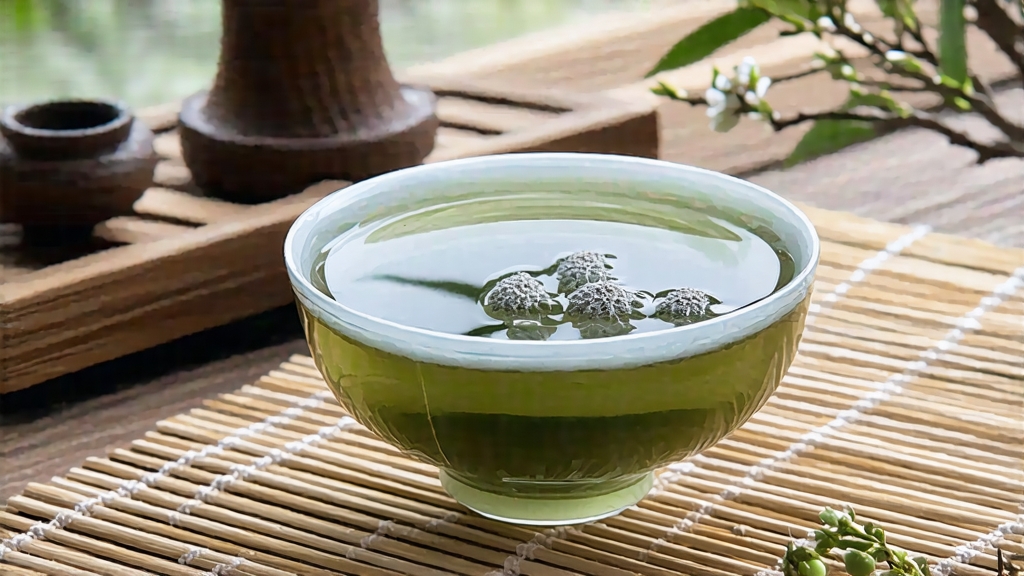
Among the six great families of Chinese tea, white tea is the least theatrical: no rolling drama of oolong, no smoky swagger of black tea, no months-long fermentation of dark bricks. It is simply picked, withered, and dried, allowing leaf and time to converse in whispers. Within this minimalist lineage, Bai Hao Yin Zhen—literally “White-Hair Silver Needle”—is the purest voice, the topmost note of a chord struck on a porcelain bell. To understand China’s oldest recorded tea style, one must first listen to this single, silver syllable.
Origins shrouded in mountain mist
Fuding and Zhenghe, two counties in northern Fujian, argue gently over primogeniture. Tang dynasty gazetteers mention “white cakes” sent from Minzhou (modern Fuding) to the imperial court in 880 CE, but these were compressed tablets of steamed white tea, closer to medicine than beverage. The loose, downy buds we recognise today appear in Song-era tribute lists as “little silver sprouts,” yet only during the late Qing did merchants seeking lighter, fragrant teas stabilise the craft. By 1857, the Da Bai (Big White) cultivar—broad-leafed, thick-budded, velveted in trichomes—was grafted throughout the region, giving Silver Needle both its signature appearance and its honeyed depth. Thus, what began as palace rarity became maritime cargo, sailing from Fuding’s Saiqi port to Singapore, then onward to Victorian London where it was christened “Flowery Pekoe Tip” and sipped by ladies who believed it possessed fewer tannins and therefore “feminine” virtues.
The bud as cosmogram
Silver Needle is plucked only in early spring, when the plant’s apex holds a single unopened shoot between 1.5 and 2.5 cm. Pickers work at dawn, gloves mandatory, fingernails trimmed to avoid bruising. A skilled woman can gather one kilogram of buds in four hours; 30,000 such buds shrink to 500 g after drying. The trichomes—those microscopic silver hairs—are not ornament but solar shield, rich in amino acids that later translate into sweetness. In the basket the buds look like miniature porcupines rolled in hoarfrost, each spine catching the first light.
Crafting stillness: two schools, one spirit
Fuding artisans practise “sun-withering” whenever March skies allow. Buds are laid on bamboo trays angled toward the southeast; every fifteen minutes they are turned so that cellular water exits evenly. By noon the moisture drops from 75 % to 35 %, and the leaf enters a passive oxidation so gentle it is barely measurable. Should clouds intervene, the process continues in low-temperature ovens (28–30 °C) whose air is stirred by fans salvaged from retired fishing boats. Zhenghe, higher in altitude and cooler, relies almost entirely on indoor withering in horse-shoe shaped corridors where cross-breezes carry the scent of orchards outside. Regardless of geography, the final act is “re-combing”: once dried, buds are hand-sorted, removing any green or purple outliers that might introduce grassy notes. The entire choreography spans 48–56 hours, during which the tea master speaks little, fearing that breath might disturb the enzymatic lullaby.
Chemistry in repose
Because the leaf is never rolled, cell walls remain intact; catechins oxidise only at the cut edge of the pluck, yielding a liquor lower in tannin and caffeine (15–20 mg per cup) than most greens. What accumulates instead is theanine—up to 3 %—and a rare di-peptide called ergothioneine, an antioxidant now studied in California for cellular repair. The result is a beverage that calms without sedating, focusing the mind like late-afternoon light on a white-washed wall.
Tasting the moon’s reflection
Professional cupping follows a quiet choreography. Five grams of buds are placed in a 150 ml porcelain gaiwan, water cooled to 80 °C is poured along the wall to preserve the hairs, and the first infusion lasts exactly 70 seconds. Liquor the colour of pale chardonnay releases aromas of fresh alfalfa, steamed rice, and a top-note Chinese tasters call “mountain air after rain.” On the tongue it enters weightless, then expands into cool melon